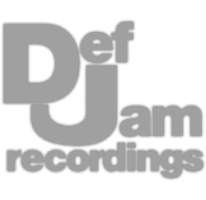Professional Analog Mastering.
Professional Analog Mastering.










With most hip-hop tracks, we want it to be loud, upfront, with aggressive low and high-frequency ranges - but we need to make sure it retains dynamics, sounds balanced, and doesn’t distort too heavily.
So, let’s start with mid-side EQ. We’ll attenuate the lows on the side image with a 12dB/octave HP filter up to about 50-60Hz. Don’t go too high, or you’ll lose some of the impressive width of the 808.
Sticking to the side image, find a low mid-frequency range that you want more of and amplify a bell by about 1-2 dB. What you pick is up to you, but I like to find either a synth or some harmonics of the 808 that feel lacking and both expand them and increase their level.
We’ll boost a very small amount on the side image below 2kHz to help the vocal blend in by increasing its temporal effects like reverb and delay, and then increase the highs with a high-shelf by about 1-2dB.
On the mid image, let’s use a shelf and boost the lows by 1-2 dB. Then, subtly dip 250Hz with a bell filter to reduce masking to clarifying frequencies. Lastly, we’ll amplify 2.5kHz to help the vocal cut through.
Next, let’s add some saturation. I’m going to use this Saturn 2 plugin, but try GSat+ if you need a free alternative. For the sake of keeping things quick, I’m going to select the mythical 3D preset, which does a lot of work for me. I’ll keep the effect at 100% but adjust the depth slider to introduce more or less of the effect. You could lower the mix, but you’d need to enable linear phase - that said, I think keeping it at 100% is the better option.
After saturation, let’s add the plugin Fresh Air - it’s free, but just a heads up, you’ll need to create an iLok account to install it.
With it, I’ll increase the mid and high air bands somewhere between 5 and 12, depending on the brightness of the source.
Last up, let’s add a clipper and then a limiter. With the clipper, let’s use a hard-knee setting to create a little distortion on each transient. Let the clipper do the majority of the work and attenuate up to 4dB-5dB.
For the limiter, pick one with a sound you like - I’ll use the Pro-L2 and cycle through the algorithms until I find one that works - usually, punchy or dynamic is my go-to.
Achieve about 1-2dB of attenuation, introduce 2x oversampling, and set a slightly longer attack with a release of 50 milliseconds. If you’re working on EDM, the steps are similar, although you might want more aggressive settings with your clipper and limiter.
Watch the video to learn more >
For a Rock master, we want it relatively loud, with a balanced low, mid, and high-frequency range, with a slight emphasis on the mid frequencies.
Same as the last chain, we’ll use mid-side EQ to start. I’ll use the same settings as the last chain, so check that section out in case you skipped it - this time, though, I’ll increase the HP filter to about 80Hz to center the kick and bass some more. Again, I’ll adjust the low-mid Hz. side image bell until it’s centered on some of the guitars.
Everything else can stay the same with some minor adjustments to account for the unique source material, but I’d lower the high side-image shelf a little to cause less expansion.
For the saturation, I’ll use this Satin tape emulator, but try ChowTape DSP for a free alternative.
I’m going to drive the input with the make-up gain function so that it compensates for the gain increase. I’d do this until I’m getting some mild distortion.
I’ll adjust the tape speed and pre-emphasis until I have a relatively flat response. I’ll turn off hiss and asperity while bringing crosstalk down until it’s barely on - the same goes for wow and flutter. I’ll increase the bias a little, and for the circuit’s headroom, I’ll lower it just a tiny bit. Combining these settings will cause some more saturation.
To control some dynamics, I’ll use an omni-pressor and select the Over-easy mastering preset. Then, enable a low cut to ensure the bass or kick doesn’t trigger it, and adjust the threshold. This will cause compression when above the threshold and expansion when below it, so set it carefully.
Next, I’m going to do this Mid Hz trick that I like a lot for rock - I’ll create a send, and on the parallel aux track, insert a linear phase EQ, and isolate the mids - be sure the EQ is set to a linear phase setting. Otherwise, this will definitely ruin your master.
Then, insert an upward compressor or maximizer - I like using the Weiss MM-1 set to wide mode, with 100% settings, but use whatever you’d like. Then I’ll blend this in and probably adjust it some more after the limiters are in place.
Speaking of which, I’ll add 2 limiters. First, the Sonnox Oxford limiter, then the Pro-L 2. With Sonnox, I’ll only use the enhance function set between 30-40% and then use the limiter to attenuate peaks - again, with an algorithm that suits the material. For soft-rock, use less aggressive settings, and for metal, I’d avoid the Sonnox limiter and swap in a clipper instead.
Watch the video to learn more >
Again, we’ll start with the same mid-side EQ, but this time, move the side-image HP filter up to about 90-100Hz.
I’m going to keep everything else relatively the same with some minor adjustments but increase the side image shelf to about 2-3 dB.
To introduce some saturation, I’ll use the Inflator plugin, which is a waveshaper that increases low-level detail while adding harmonics. I’m going to set the effect to 100% but then decrease the input to cause less of the overall effect. I’ll monitor the sound until the original signal and the processed signal have roughly the same loudness.
If I want it warmer, I’ll increase the curve; if I want it more mid-focused, I’ll lower the curve. Usually, 0 is a great combination of the 2 sounds.
For the 3rd insert, I’ll use Fresh Air. I’ll increase both bands moderately but with lower settings than those used in hip-hop unless the pop track leans more toward hip-hop than other genres.
Last up, I’ll introduce a clipper and then a limiter.
You’ll notice that the Hip-Hop and Pop chains are pretty similar - this is due to Pop music adopting more and more hip-hop elements over the years. That said, for pop, we can use a slightly softer knee on the clipper and slightly de-link our limiting settings to cause more stereo variation.
Additionally, the algorithm used may vary, with a more modern sound working well for a lot of pop tracks.